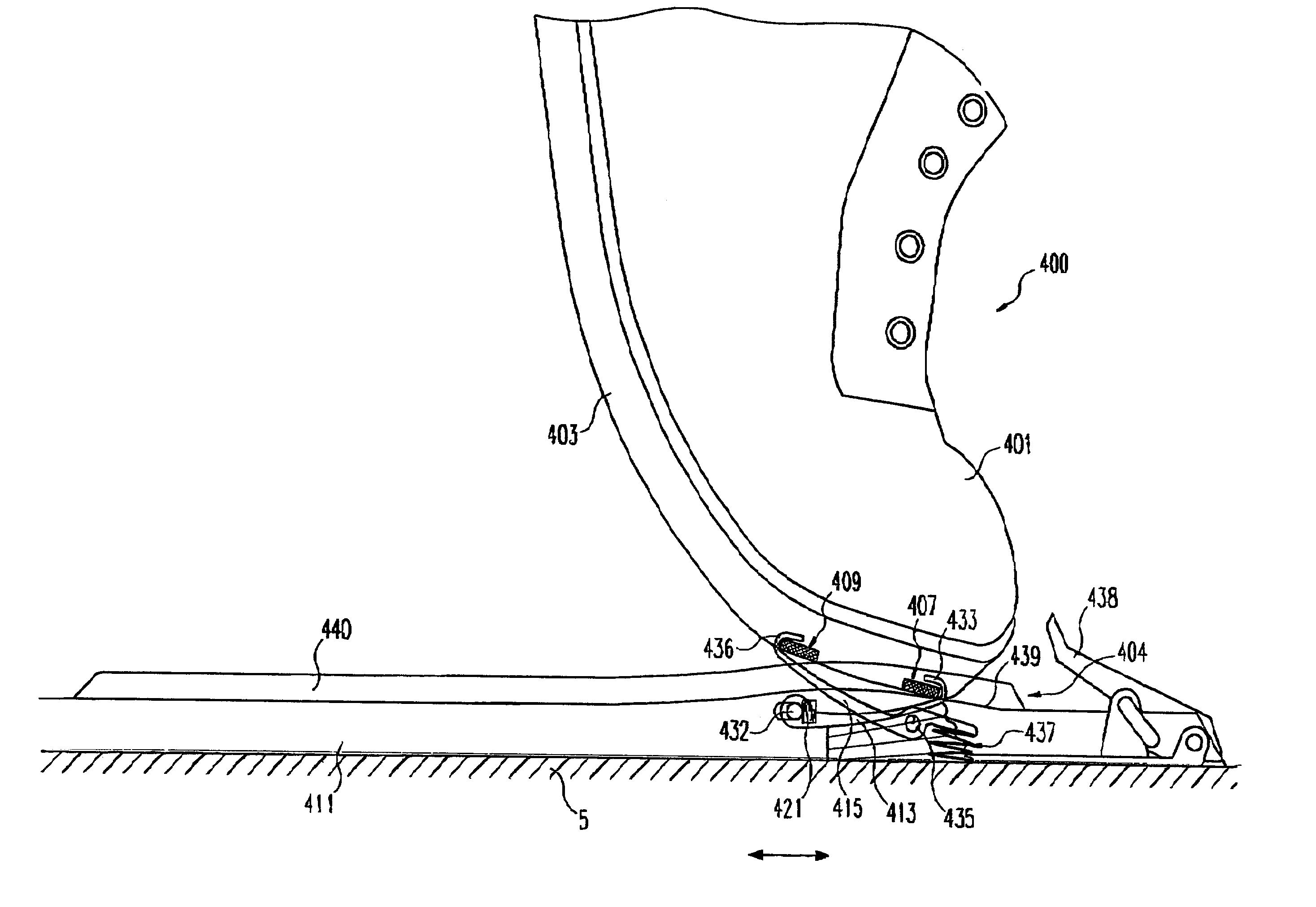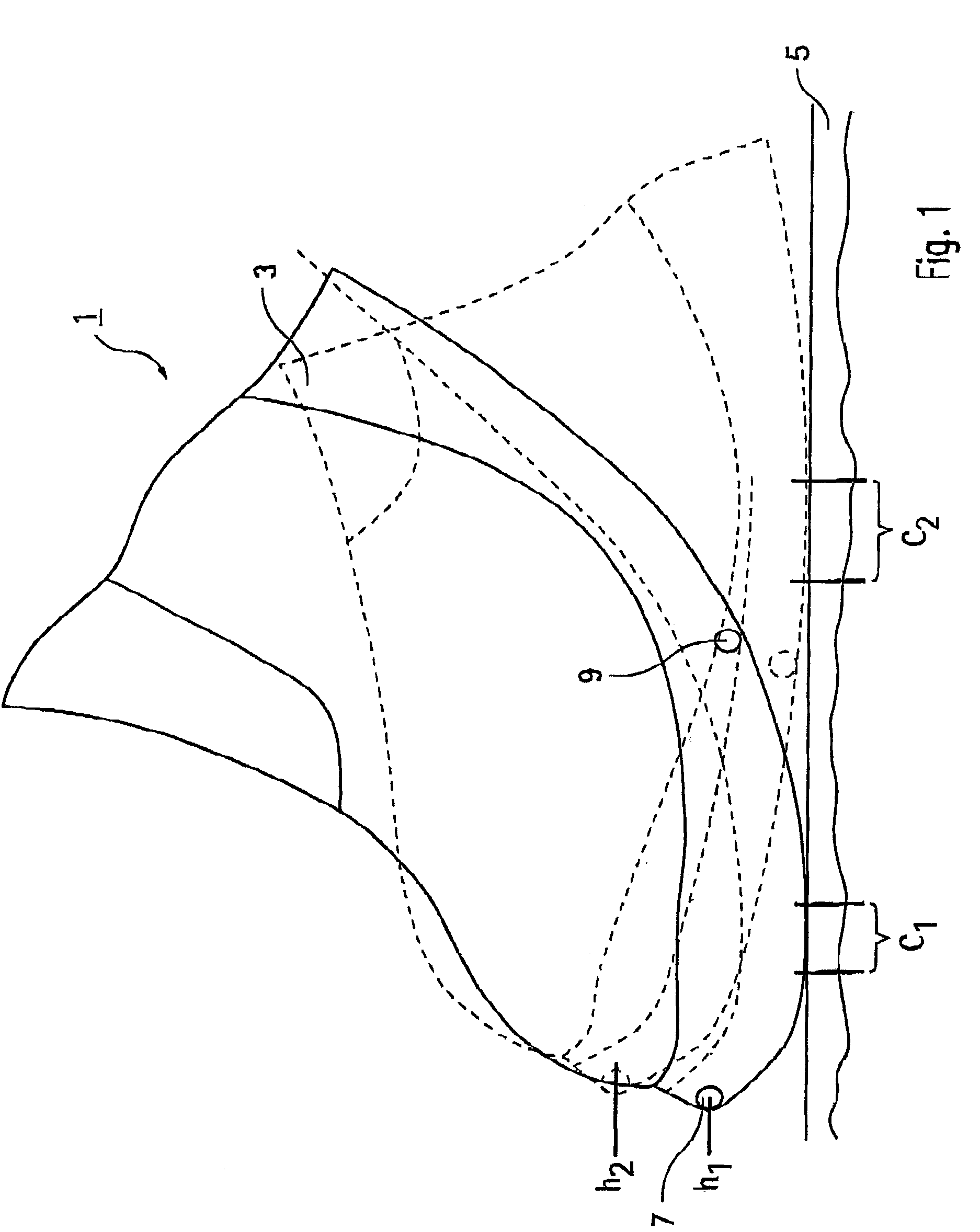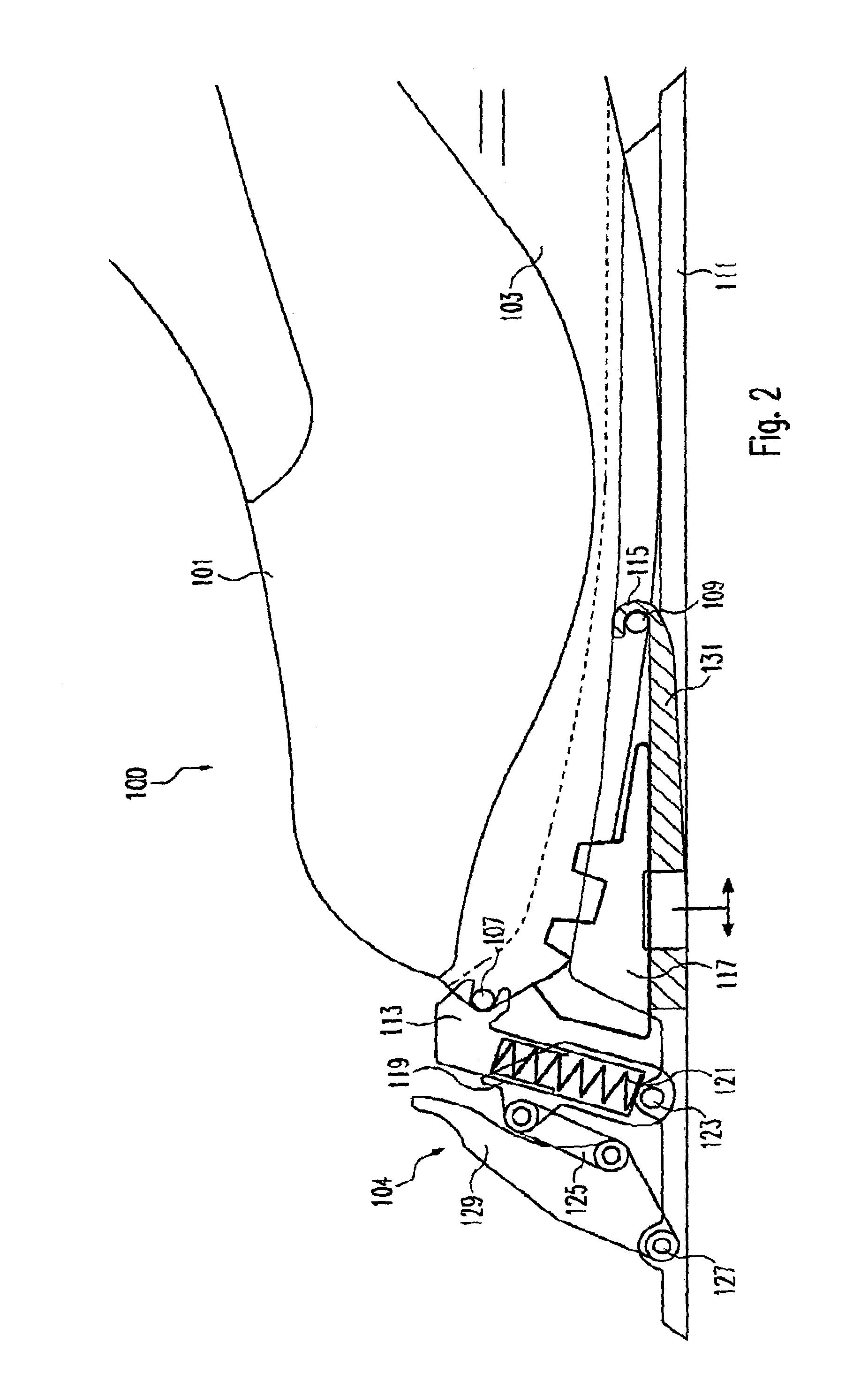Arrangement comprising a ski binding and a ski boot
a technology of ski boots and ski bindings, which is applied in the direction of ski bindings, skiing, sports apparatus, etc., can solve the problems of not enabling optimal force to be applied to skis, bindings and similar designs that fail to achieve an anatomically optimal movement sequence, etc., and achieves better service ability properties.
- Summary
- Abstract
- Description
- Claims
- Application Information
AI Technical Summary
Benefits of technology
Problems solved by technology
Method used
Image
Examples
Embodiment Construction
[0027]FIG. 1 shows the front section of a ski boot 1 with a boot sole 3 in two of the positions into which it can move on the surface of a ski 5. A first movement position, in which the heel region (not shown) of the boot 1 has been raised far above the surface of the ski 5, is drawn with a continuous line, whereas a second movement position, in which the heel region of the boot is in contact with the ski, is drawn with a dashed line. In the sole 3 of the boot a front and a back engagement element 7 and 9, respectively, are shown; each of these interacts with an engagement element (not shown here) on the binding side so as to fix the boot in position on the ski. It can be seen that the boot sole 3 in the front region, shown here, is smoothly curved in the long direction.
[0028]Comparison of the two movement positions makes clear that during the transition from the first, heel-raised position to the second, heel-lowered position, the front end of the sole and hence the front engagemen...
PUM
 Login to View More
Login to View More Abstract
Description
Claims
Application Information
 Login to View More
Login to View More - R&D
- Intellectual Property
- Life Sciences
- Materials
- Tech Scout
- Unparalleled Data Quality
- Higher Quality Content
- 60% Fewer Hallucinations
Browse by: Latest US Patents, China's latest patents, Technical Efficacy Thesaurus, Application Domain, Technology Topic, Popular Technical Reports.
© 2025 PatSnap. All rights reserved.Legal|Privacy policy|Modern Slavery Act Transparency Statement|Sitemap|About US| Contact US: help@patsnap.com



